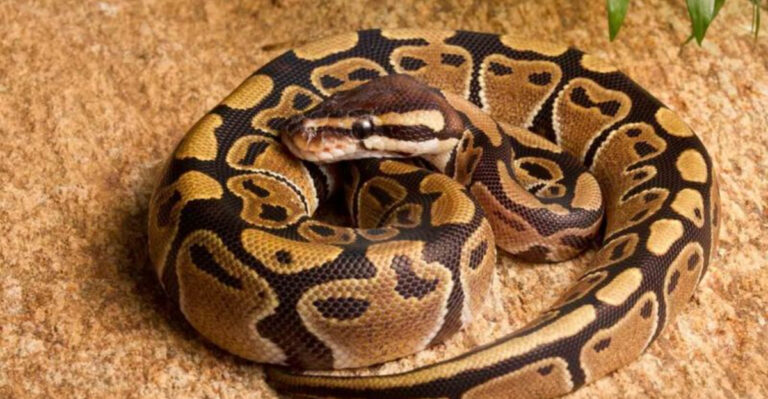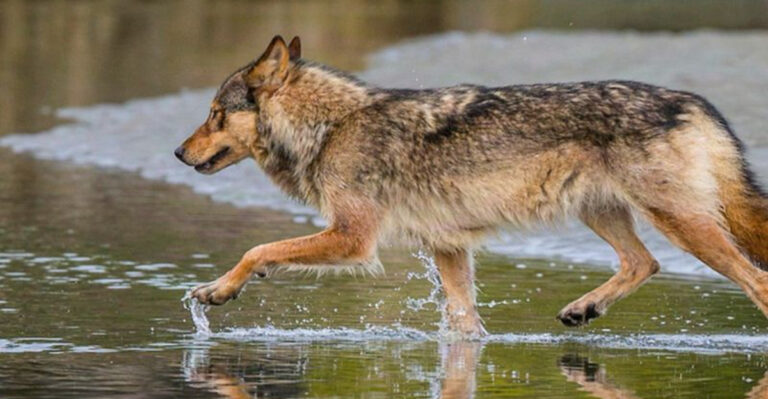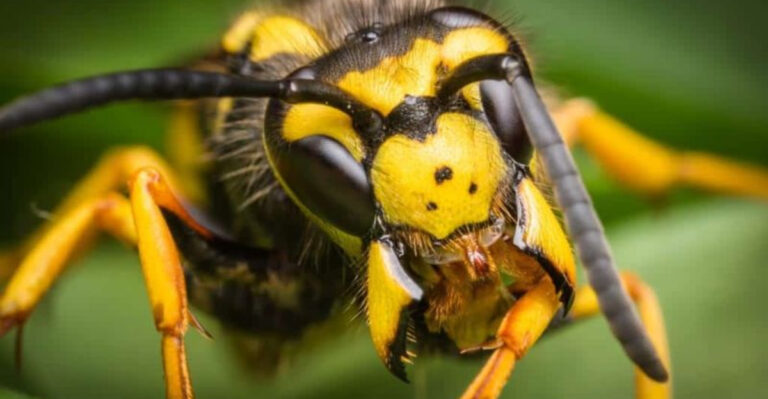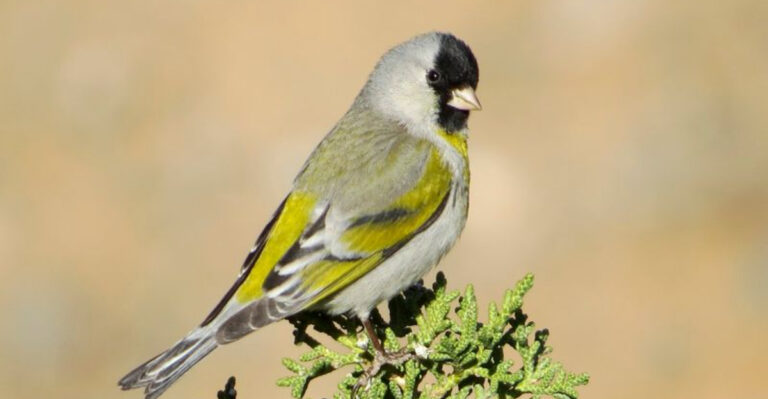What To Do If A Coyote Shows Up In Your Yard (And How To Handle Other Wildlife Safely)
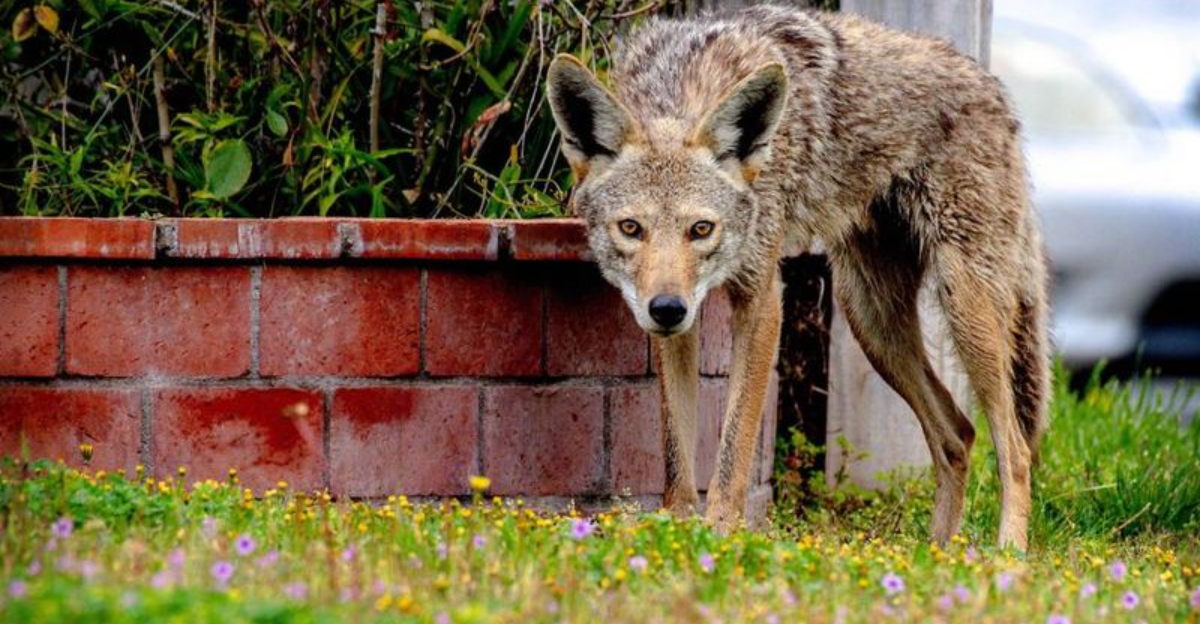
Finding a coyote or other wild animal in your yard can be startling and even scary. These unexpected visitors might seem threatening, but knowing how to respond safely can protect both you and the animal.
Whether it’s a curious coyote, a family of raccoons, or even a wandering deer, the right approach can turn a potentially dangerous situation into a peaceful coexistence.
Stay Calm And Keep Your Distance
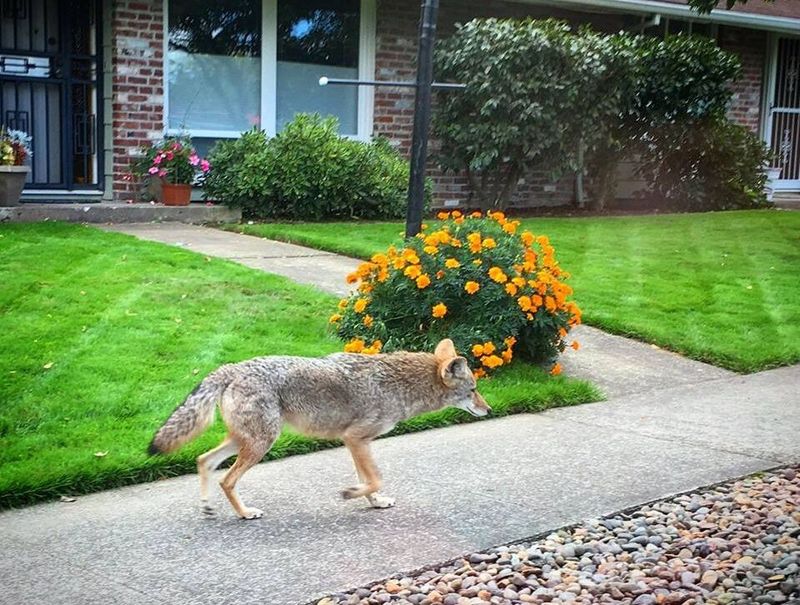
Your first reaction might be panic, but keeping cool is crucial when spotting a coyote. These wild canines are typically more afraid of you than you are of them.
Maintain at least 50 feet of distance between you and the animal. Never approach or corner a coyote, as this may trigger defensive behavior. If you’re outside when you notice the coyote, slowly back away while facing the animal.
Remember that coyotes are naturally wary of humans and usually avoid close contact unless they’ve been fed by people in the past.
Make Yourself Look Big And Intimidating
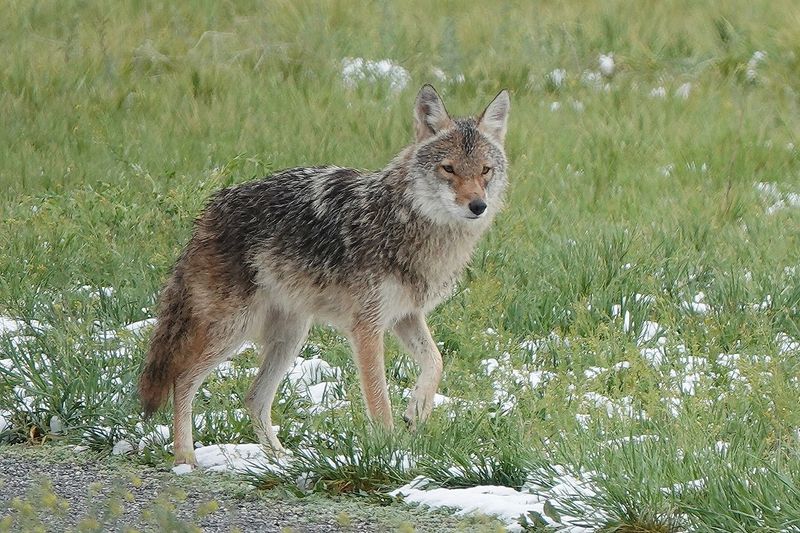
Coyotes respond to confidence and size when determining threat levels. Raise your arms above your head, wave them slowly, and make yourself appear larger than you actually are.
Grab a jacket and hold it open wide, or pick up a nearby stick to extend your profile. The goal isn’t to attack but to demonstrate that you’re not easy prey. Speak in a firm, loud voice – not screaming, but authoritative.
This technique, called ‘hazing,’ teaches wild animals to maintain their natural wariness of humans and discourages them from getting comfortable near your home.
Make Noise To Drive Them Away
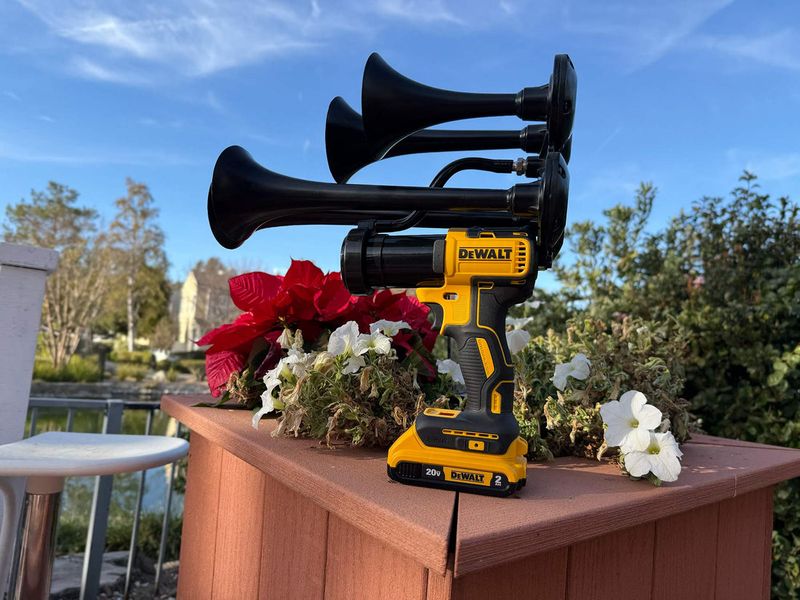
Loud, unexpected sounds often send coyotes running. Clap your hands forcefully, bang pots together, or blow a whistle if you have one handy.
Many homeowners keep a “coyote shaker” – a can filled with coins or pebbles – ready for such encounters. Air horns work exceptionally well and can be purchased inexpensively at sporting goods stores.
The key is consistency – the noise should be startling but not so terrifying that you can’t bring yourself to use it when needed. Remember that the goal is to scare, not harm. Never throw objects directly at the animal.
Secure Food Sources Around Your Property
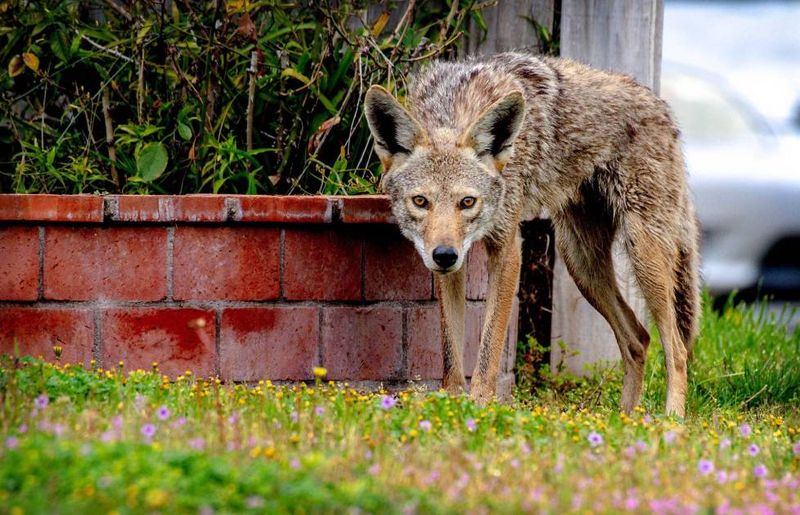
Coyotes follow their noses to food, and your yard might be an all-you-can-eat buffet without you realizing it. Pet food left outside is like ringing a dinner bell for wildlife. Always bring pet dishes inside after feeding time.
Secure your garbage cans with animal-proof lids or bungee cords. Fallen fruit from trees should be collected promptly, and bird feeders need regular cleaning to prevent seed buildup below.
Even compost piles can attract coyotes if they contain food scraps. Using enclosed compost bins rather than open piles helps keep curious critters from investigating your leftovers.
Install Motion-Activated Deterrents
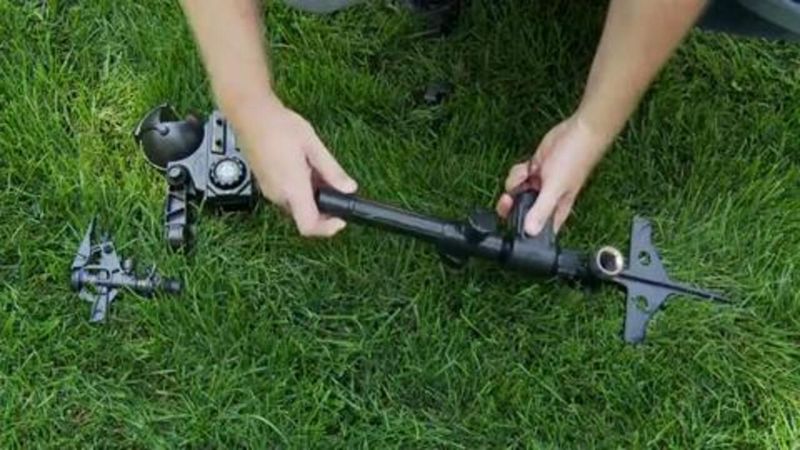
Technology can be your ally in keeping coyotes at bay. Motion-activated sprinklers deliver a surprising burst of water when animals enter their detection zone – harmless but effective at teaching wildlife to avoid your space.
Solar-powered flashing lights mimic the eyes of predators, making coyotes think twice before entering. Some homeowners install ultrasonic devices that emit high-frequency sounds unpleasant to animals but inaudible to humans.
These gadgets work best when moved occasionally to prevent wildlife from becoming accustomed to them. Remember that no single deterrent works forever – rotating between different methods keeps coyotes guessing.
Protect Your Pets With Extra Vigilance
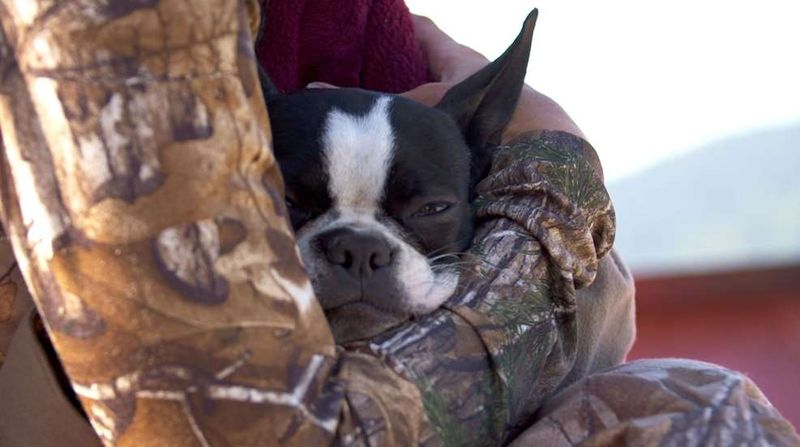
Small pets can look like prey to hungry coyotes. Never leave cats or small dogs unattended outdoors, especially during dawn and dusk when coyotes are most active. For nighttime bathroom breaks, accompany your pet outside with a flashlight.
Consider installing coyote-proof fencing that’s at least six feet tall with a roll bar at the top and buried extension at the bottom.
Coyotes can climb and dig, so these features are crucial. When walking dogs in coyote territory, keep them on short leashes (six feet or less) and avoid retractable leashes that allow pets to wander into brush where coyotes might hide.
Understand Raccoon Encounters

Raccoons bring different challenges than coyotes. These masked bandits are incredibly clever and can open latches, doors, and containers with their dexterous paws. If you spot one in your yard, clapping and making noise works well to send them scurrying.
Never corner a raccoon – they can become aggressive when frightened. If one enters your home, open exterior doors and step away to give it an escape route.
Raccoons can carry rabies and other diseases, so keeping your distance is essential. Unlike with coyotes, raccoons are more likely to stand their ground, especially if they’re protecting young ones nearby.
Responding To Deer Visitors
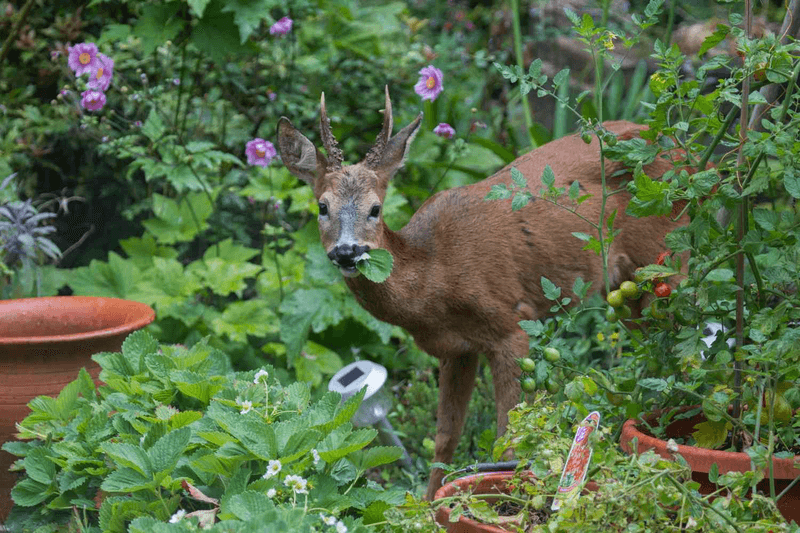
Deer may seem gentle, but bucks can be dangerous during rutting season and does fiercely protect their fawns. If deer frequent your yard, maintain a respectful distance of at least 50 yards.
Unlike with predators, making yourself look big won’t necessarily intimidate deer. Motion-activated sprinklers work well as deer deterrents.
For gardeners, applying deer-repellent sprays to prized plants can discourage browsing. These products use scents that deer find unpleasant but are harmless to the animals.
Never approach fawns, even if they appear abandoned – mother deer often leave babies hidden while they forage nearby.
Managing Snake Encounters Safely
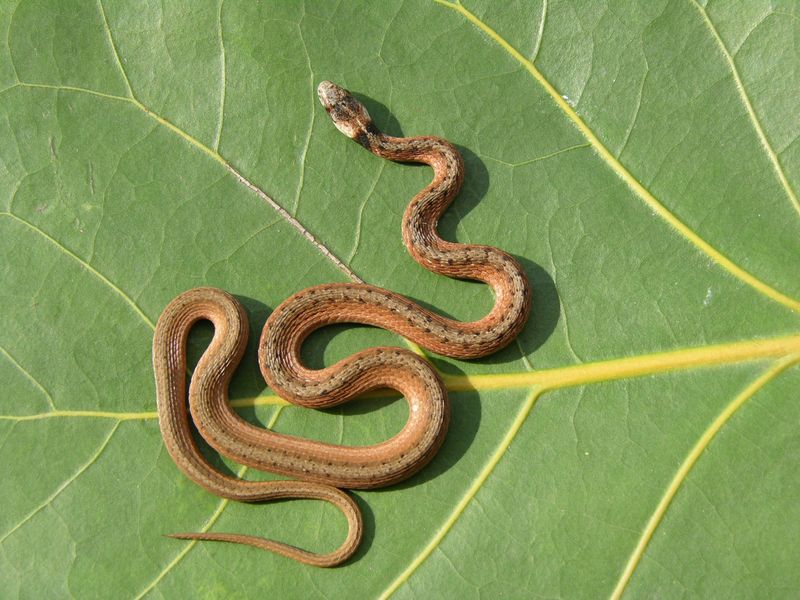
Finding a snake in your yard often triggers fear, but most snakes are non-venomous and beneficial predators of rodents. From a safe distance, try to identify the species using a phone app or field guide. If venomous, call animal control immediately.
For non-venomous snakes, simply leave them alone – they’ll typically move on within a day. You can gently spray them with a garden hose to encourage faster departure.
To prevent snake visits, eliminate hiding spots by keeping grass short, removing brush piles, and sealing gaps in foundations. Remember that killing snakes is illegal in many areas and disrupts the natural balance of your local ecosystem.
Dealing With Opossums Properly
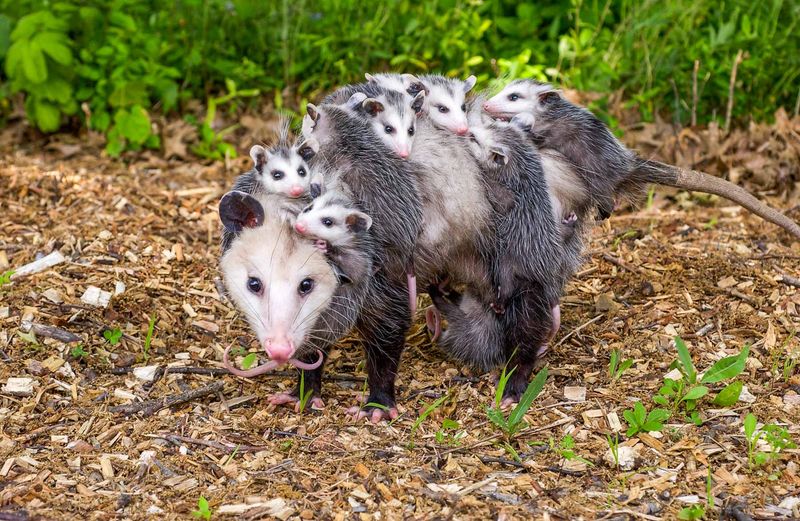
Opossums might look threatening with their pointy teeth, but they’re actually nature’s cleanup crew. These marsupials eat ticks, snails, and even venomous snakes! If you spot one in your yard, simply leave it alone – it will likely waddle away after dark.
Despite their scary defense display of hissing and showing teeth, opossums rarely bite and typically “play dead” when truly frightened. They’re naturally resistant to rabies due to their low body temperature.
If an opossum has taken up residence under your deck or shed, placing bright lights, a radio tuned to a talk station, or ammonia-soaked rags nearby will usually convince it to find new accommodations.
When To Call Wildlife Professionals
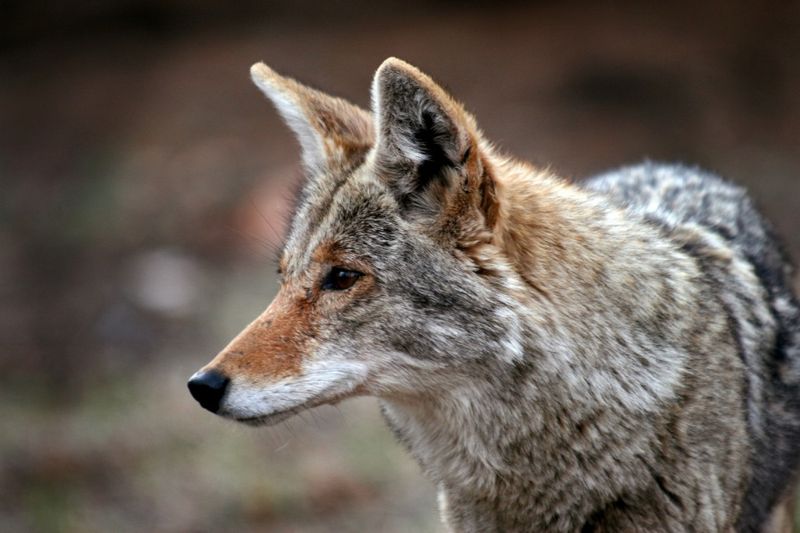
Some wildlife situations require expert intervention. Call professionals if an animal appears sick or injured, shows unusually aggressive behavior, or repeatedly returns despite deterrent efforts. Animals that seem disoriented, stagger, or show no fear of humans might have rabies.
Wildlife that has entered your home should trigger an immediate call to experts. Never attempt to trap or handle wild animals yourself – even small creatures can inflict serious injuries when cornered.
Keep contact information for local animal control, wildlife rehabilitation centers, and pest management services in an easily accessible place. Many communities have 24-hour wildlife hotlines for emergency situations.
Creating A Wildlife-Resistant Landscape
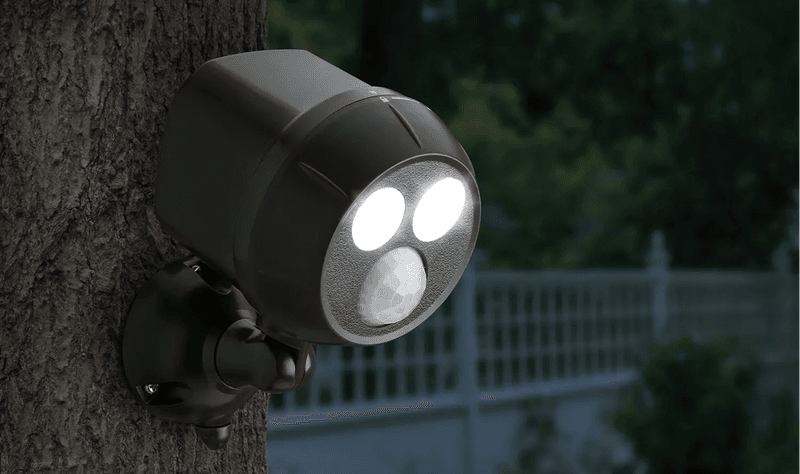
Your landscaping choices can significantly reduce wildlife conflicts. Dense shrubs near your house provide hiding spots for predators, so keep foundation plantings trimmed and sparse. Choose plants native to your region but not particularly attractive to wildlife as food sources.
Install motion-activated outdoor lighting to illuminate your yard at night when wildlife is most active. Fencing should be buried at least six inches underground to prevent digging animals from accessing your yard.
Consider installing an owl box to attract these natural predators of rodents – fewer mice and rats mean fewer reasons for coyotes and other predators to visit.
Just remember that any wildlife management strategy requires patience and consistency.

